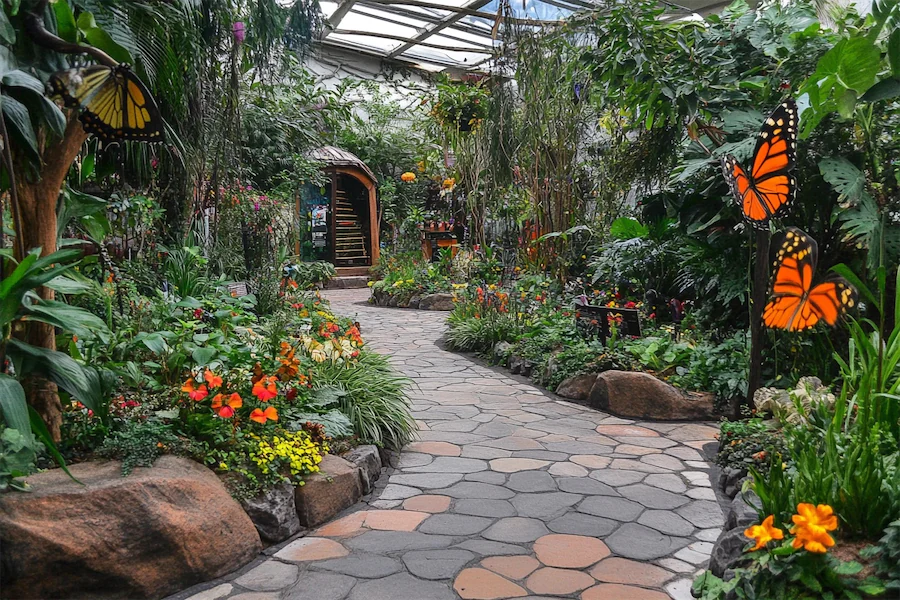A butterfly garden is a thoughtfully designed outdoor space aimed at attracting and supporting butterflies throughout their life cycles. By incorporating specific plants and features, such gardens provide essential resources for butterflies, including food, shelter, and breeding grounds.
History and Origins of Butterfly Gardens
The concept of butterfly gardens emerged from a growing awareness of the ecological importance of pollinators and the need to conserve their habitats. Over time, gardeners and conservationists recognized that creating environments rich in nectar sources and host plants could support butterfly populations, leading to the intentional design of gardens that cater specifically to these insects.
Key Features of Butterfly Gardens
To establish a successful butterfly garden, consider incorporating the following elements:
- Nectar-Rich Flowers: Plant a variety of flowering species that provide abundant nectar. In Vietnam, suitable choices include butterfly bush (Buddleia), lantana (Lantana camara), and cosmos (Cosmos bipinnatus). These plants are known to attract local butterfly species by offering accessible nectar sources.
- Host Plants for Larvae: Include plants that serve as food sources for caterpillars. For instance, milkweed (Asclepias spp.) is essential for the larvae of certain butterfly species, providing necessary nutrients for their development.
- Water Sources: Create shallow puddles or place dishes filled with moist sand to offer butterflies a place to drink and obtain minerals, a behavior known as “puddling.” This feature supports their hydration and nutrient needs.
- Shelter and Sunlight: Ensure the garden has sunny areas for butterflies to bask and dense shrubs or grasses to provide shelter from predators and harsh weather. Butterflies are ectothermic and rely on sunlight to regulate their body temperature.
Applications of Butterfly Gardens
Butterfly gardens offer multiple benefits:
- Biodiversity Support: By providing habitat and food sources, these gardens contribute to the conservation of butterfly species and overall ecological health.
- Educational Opportunities: They serve as living classrooms, allowing individuals to observe and learn about butterfly behavior, life cycles, and the importance of pollinators.
- Aesthetic Enhancement: The presence of vibrant flowers and fluttering butterflies adds beauty and tranquility to any landscape, creating a serene environment for relaxation.
Considerations When Creating a Butterfly Garden
When planning your butterfly garden, keep the following in mind:
- Plant Diversity: Incorporate a mix of native flowering plants that bloom at different times of the year to provide continuous nectar sources. This approach ensures that butterflies have access to food throughout their active seasons.
- Avoid Pesticides: Refrain from using chemical pesticides, as they can harm butterflies and other beneficial insects. Opt for natural pest control methods to maintain a healthy garden ecosystem.
- Maintenance: Regularly tend to the garden by deadheading spent flowers, removing invasive species, and ensuring water sources are clean to keep the habitat inviting for butterflies. Proper maintenance promotes a thriving environment for both plants and pollinators.
Conclusion
Creating a butterfly garden is a rewarding endeavor that supports local wildlife and enhances the beauty of your surroundings. By understanding the needs of butterflies and incorporating appropriate plants and features, you can establish a vibrant habitat that fosters the presence of these enchanting creatures.
